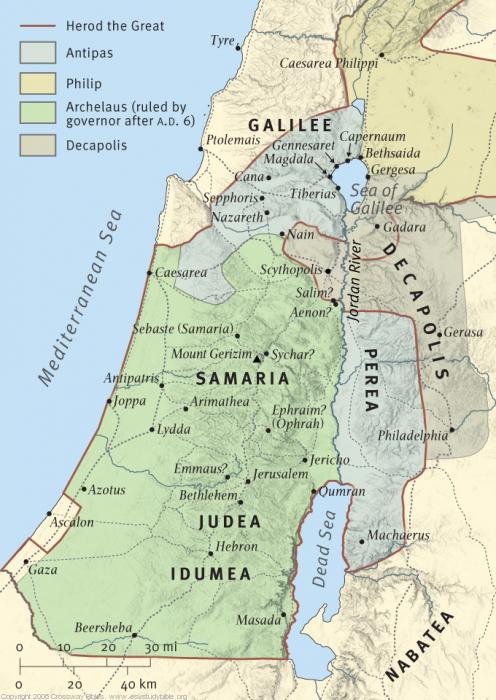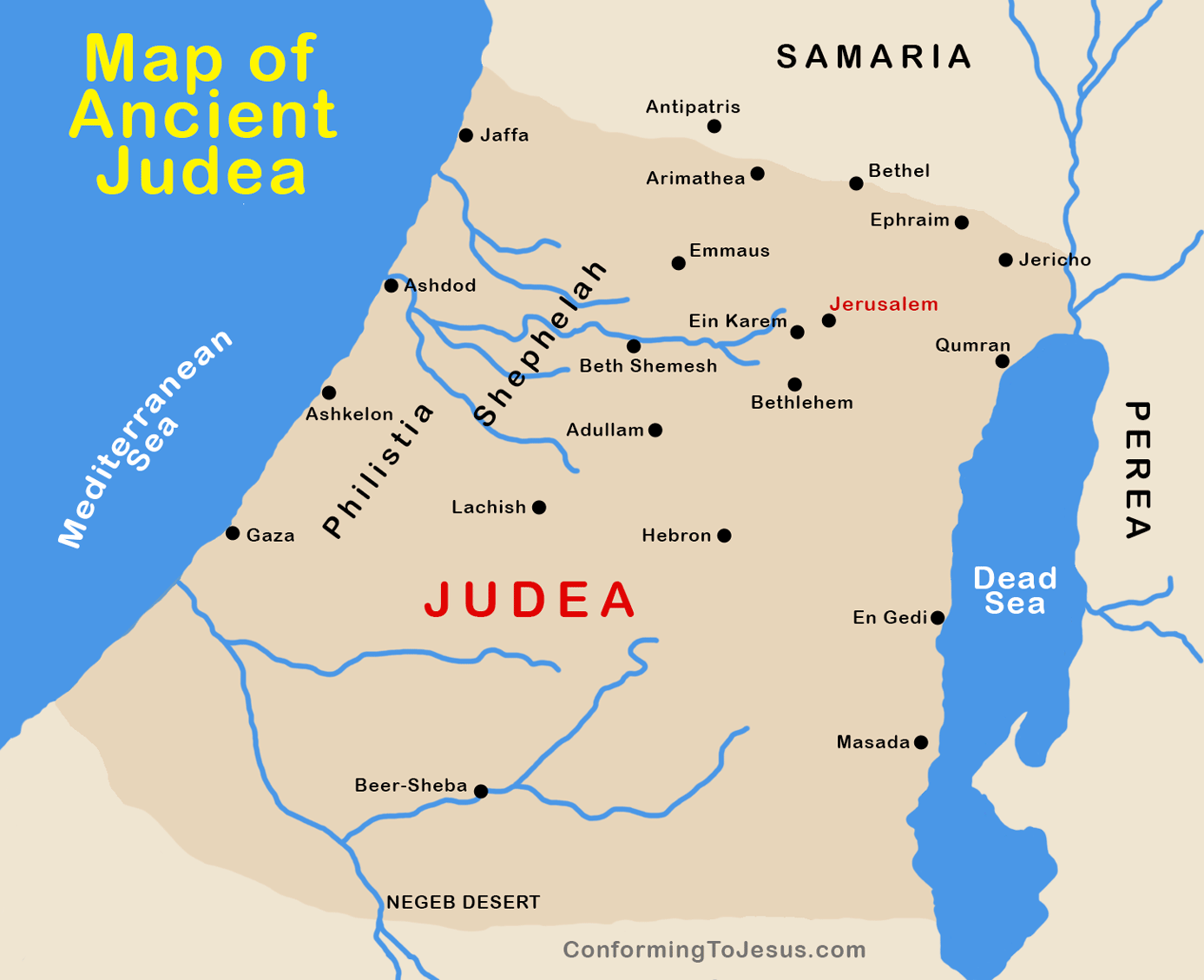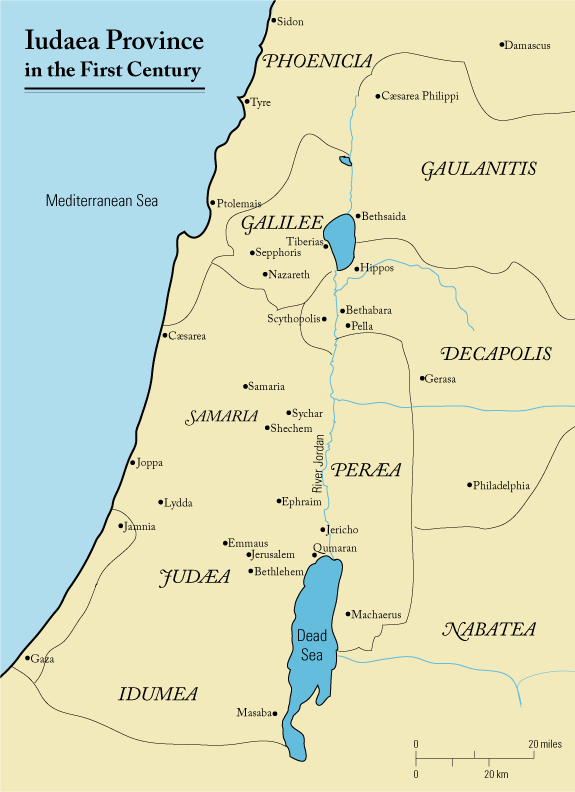It is a correct understanding of the “Nazara or Nazareth - Correct birthplace of Jesus” article. I misunderstood you to be drawing your conclusion from the other article which didn’t use language as certain.I presented no dogma,please read the following:
Standford Rives on Birthplace of Jesus
Excerpt from Original Gospel of Matthew: Appendices Vol. 2 pages 148-50 -- (available in our Amazon bookstore) without its footnotes.
Is It Nazara? Or Is It Nazareth?
A late Greek translator misread Nazara—a city in the south—as Nazareth—a city in the north that did not likely exist until several more decades after Christ. Scholars have concurred on this point because the early church writers such as Origen circa 207 AD and Jerome in the early 400s repetitiously quote numerous Matthean passages speaking of Nazara not Nazareth. Origen did not know of any manuscript that spelled it as Nazareth. Also, in the Shem-Tob Matthew 3:13, it speaks of Nazarel which is close to Nazara.
http://astore.amazon.com/jwoogm-20.
Professors Jeffrey J. Bütz and James Tabor in The Secret Legacy of Jesus (Bear & Company, 2010) at 75-76 explain that Jesus was likely called ‘Jesus the Nazarene’ and not “Jesus of Nazareth.” They explain “many scholars now make the argument that the name Jesus of Nazareth was a mistranslation of the original phrase, Jesus the Nazarene, and that it did not refer to the town of Nazareth at all.” They note that Nazareth may not even have been in existence in Jesus’ day.
This explains why in the earliest church, Christ and Christians were called Nazarenes. See Matt. 2:23, “fulfill be called a Nazarene”; Luke 24:19 “Jesus the Nazarene”;Acts 24:5 “sect of the Nazarenes.”
The New Advent Catholic Encyclopedia concurs: “In the time of Eusebius and St. Jerome (Onomasticon), its name was Nazara (in modern Arabic, en Nasirah), which therefore, seems to be the correct name; in the New Testament we find its derivatives written Nazarenos, or Nazoraios, but never Nazaretaios. The etymology of Nazara is neser, which means ‘a shoot.’”
While later Greek manuscripts have Matthew 4:13 say Nazareth, the earliest Greek manuscripts of Matthew must have likewise spelled the word as “Nazara.” We know this because this is how it was quoted in the early church writings. See, Theodor Keim, Edmund Martin Geldart, The History of Jesus of Nazara (Williams and Norgate, 1879) Volume 4 at 108 fn. 1 (“Origen...prefers to write nazara in 10:16 of his commentary on Matthew three times...[and seven times in his commentary on John]. Jerome gives it nomine Nazara....”)
Rather than anyone realizing a translation error, it was later assumed Nazara was the same as a city later known as Nazareth. Thus, “Nazara” came to be “generally considered the earliest form of the name [Nazareth] in Greek.” (“Nazareth,” Wikipedia.)
In Matthew 4:13 in the Shem-Tob, we see it uses Nazerel, in keeping with the earliest Greek tradition.
This helps explain the prophecy that “he shall be called a nazarene.” The name of the town nazara / nazerel not Nazareth was in view. This has etymological Messianic associations that are important which the Nazareth mistranslation destroys. Nicholson explains that in Isaiah 11:1, the Messiah is a “branch” (netser) from Jesse’s root. In Zechariah 6:12, we read: “Branch (NTSR) shall he be called.” Nicholson then notes: “It is generally held that there is a real etymological connexion between Nazara and netser.” (Nicholson: 33.) Thus, calling Jesus a Branch was to call him a netser in Hebrew. This was the root meaning of Nazara.
It thus appears the correct name for Jesus’ early residence was Nazara. It is a key change in spelling so we see a fulfilled prophecy of Zechariah 6:12. See also Isaiah 11:1.
Netser-Branch Prophecy Behind ‘He Will Be Called A Nazarene’
Jerome said the Hebrew OT had a prophecy that Messiah would be called a “Nazarene.” Many Christians wonder where can this be found. It requires knowledge of Hebrew to recognize it. Jerome is focusing upon the word Branch in Hebrew which is Netser. The Septuagint mistranslated it in 257 BC with a Greek word meaning “flower” rather than Branch in Zechariah 6:12. Thus, Jerome argued the verse had been lost by mistranslation in the Greek Septuagint. Netser was the word he focused upon.
Zechariah 6:12 in modern Bibles follows the Hebrew, not the Septuagint Greek of 257 BC. The word “branch” is netser in Hebrew—the root word for the city of Nazara—the true name of the town where Jesus lived at one time. Thereby we realize Jerome was recognizing Zechariah 6:12 is the verse Matthew meant as the prophecy ‘he will be called a Nazarene.’ Today Zechariah 6:12 reads about a Messiah figure: “the man whose name is The BRANCH (Heb. NTSR).”
END: Excerpt from Standford Rives, Original Gospel of Matthew: The Appendices (2014) at 148-150 available in our Amazon bookstore at http://astore.amazon.com/jwoogm-20.
Nazara or Nazareth - Correct Birthplace of Jesus
It is a reasonable understanding, rather. Right, please?
Regards
That being said according to the article Jesus was born in the city Nazara, not in the wilderness under a date palm tree, so your not really proving the Quran’s view point here.



